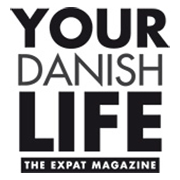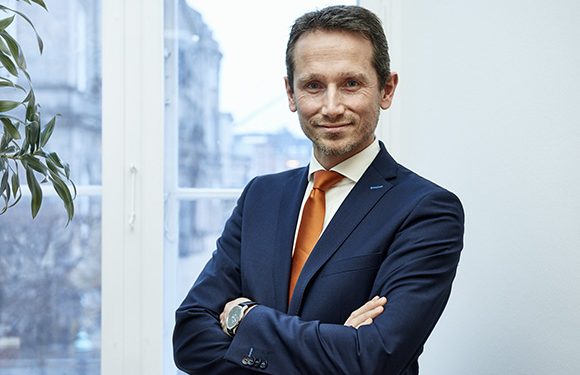The 2019 Budget Proposal: Much ado about peanuts?
Understanding the Danish Government’s annual budget proposal process, and how it proposes to finance its household, can be a tricky thing, not only for expats, but also for Danes. In Denmark, what is left to negotiate, is actually a very small part of the country’s total yearly expenses.
The article continues below.
By Bente D. Knudsen
It is the most important part of the autumn; when the government proposes the budget for the coming year.
In Denmark, if the government had a majority, it would be an easy process, however, as a minority government, it is not.
The Danish Parliament has 179 mandater (seats) and it takes 90 seats to be a majority government. Lars Løkke Rasmussen’s Government has 53 seats in the Danish Parliament
Therefore, the Danish Finance Minister, Kristian Jensen, has to find a majority together with one or more parties in parliament to get the 2019 Budget proposal approved.
This year it will most likely (again) be with Dansk Folkeparti; it could in theory also be with any other of the opposition parties, if they can agree.
The article continues below.
What is important to note, is that this budget proposal is the last one that the present government has to get through parliament. So, the 2019 budget has to be seen in the context of the upcoming elections.
General elections for the Danish parliament, Folketinget, have to take place before the 17 June 2019.
Many commentators have made the remark that the proposed 2019 Budget is a gift box, however, it is important to note that of the total budget of DKK 1,100 billion, only DKK 4,2 billion are up for negotiation.
The bulk of the 2019 Budget is already allocated to public expenses such as salaries to public employees, welfare benefits such as; SU, pensions (folkepension), unemployment and social help (kontant hjælp).
In total about 44 percent go to social expenses, 16 percent to health, 26 percent to education and other public services, 14 to other public expenses. All such budget expenses are not up for negotiation each year, as they have to be paid.
Also, the budget is regulated by the budget law, Budgetloven, which sets out a range of rules and regulations for what a government can do with its household budget.
This means, as former Finance Minister Bjarne Corydon said to DR3, that Denmark will never have the kind of conditions where the government can make budget promises based on loans to finance its expenses, as has been seen in for instance Greece. The checks and balances of the system based on the budget law would prevent this from happening.
The article continues below.
DKK 4,2 billion is the amount that the government has decided is the “extra”, which it wants to dispose of in a certain manner, and it is always this “extra”, which can give problems.
All of the parties part of the majority vote want to have their say on how this extra is used.
Last year this gave huge problems, as Liberal Alliance (part of the government) and Dansk Folkeparti ( needed to get the majority vote) got into a large fight and the budget negotiations got very chaotic.
This is a situation, which prior to an election year, Lars Løkke Rasmussen’s party Venstre absolutely wants to avoid.
So, in the 2019 Budget’s extra allocations are only points, which the government is certain will please Dansk Folkeparti, and anything controversial, such as a reduction of the heritage tax, which Liberal Alliance wants implemented, has been taken out. This was a point, which would have made Dansk Folkeparti say no to the 2019 Budget proposal.
On top of the DKK 4,2 billion extra is an extra reserve of DKK 1,3 billion annually from 2019 to 2022. This amount has been set aside and is not yet allocated allowing room for wishes from the party that will help them get the majority vote for the total 2019 Budget.
It is smaller than last year where the extra reserve was DKK 2,5 billion.
However, DF’s negotiator René Christensen said to DR1 that this does not worry them as the government has allocated extra resources out of the DKK 4,2 billion to some of the issues, which DF find important such as the senior citizens and the countryside districts.
However, he said, they find that there is not enough to compensate the impact of inflation on the purchasing power of the pensions – the folkepensioner (the pensions all Danes are entitled too), so this could be a negotiation point for DF.
The article continues below.
One point, for which Finance Minister Kristian Jensen was questioned by members of the press at the presentation meeting, was the lack of initiatives to improve the employment situation, or rather the lack of labour, which Danish companies and the industry in general have been trying to get the government to address.
This will become a hot potato in the coming negotiations, as Dansk Folkeparti wants to further reinforce conditions to make it difficult for refugees and asylum seekers to stay in Denmark and to get their families to Denmark.
In general, the viewpoint of Dansk Folkeparti has been that there are enough (labour) resources in Denmark that need to be activated first before any talk can be made of making it easier for foreigners to come to Denmark to work.
This is contrary to the position of the government, who wants to be able to attract qualified foreign labour to Denmark also from outside the EU but so far they have not been able to get a majority vote on this point.
According to Finance Minister Kristian Jensen they will be presenting a plan later this autumn on how to recruit and attract more foreign labour to Denmark.
Number of seats (mandater) since the June 2015 election per party:
Red
Socialdemokratiet (S) 46
Enhedslisten (EL) 14
Socialistisk Folkeparti (SF) 7
Alternativet (ALT) 10
Either/Or
Radikale Venstre (RV) 8
Blue
Dansk Folkeparti (DF) 37
Venstre (V) 34
Liberal Alliance (LA) 13
Det Konservative Folkeparti (KF) 6
Members from Greenland and the Faroe Islands (mostly they vote red):
Inuit Ataqatigiit (IA)1
Tjóðveldi (T)1
Javnaðarflokkurin (JF)1
Uden for folketingsgrupperne (UFG)1
Blok (blå blok/ rød blok): these are established coalitions of parties. The ‘blå blok’ (blue block), also known as ‘de borgerlige’ (the ‘bourgeois’), are liberals, conservatives and other right-wing parties. The ‘rød blok’ (red block) are social democrats, liberal democrats and other left-wing parties. Each block supports a candidate for the position as statsminister (prime minister).
After the June 2015 election where Helle Thorning-Schmidt (S) lost, and since resigned from her chairmanship of Socialdemokraterne, her place was taken over by the new chairman of Socialdemokraterne, Mette Frederiksen, for rød blok and Lars Løkke Rasmussen (V) for blå blok.
In the coming elections how the different blocs will constitute themselves is also up for debate. Some commentators talk of a change in the blok formations. This will become more evident once the Danish Government sets an election date.


